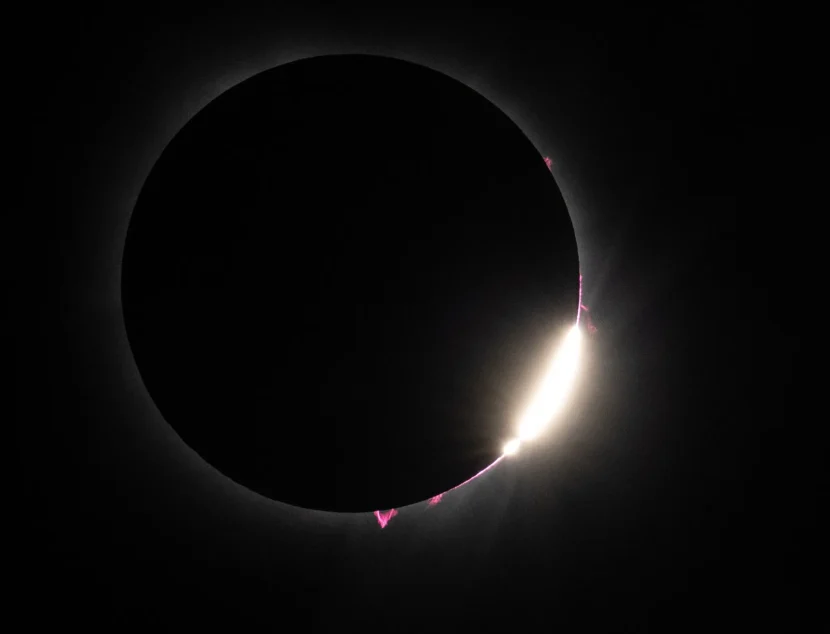If you’re bummed out about missing the total solar eclipse in the Lower 48 this month, start planning now. The next total solar eclipse in North America will happen in 2033, in Alaska.
University of Alaska Anchorage physics and astronomy professor Travis Rector said the world sees about one to two solar eclipses a year, but the next one in North America will be on March 30, 2033.
“It’s going to pass over the northwestern part of the state of Alaska,” Rector said. “So the path of totality will be visible in Western Alaska. So over towns like Nome and Kotzebue, and all the way up through Utqiagvik.”
Rector said a path of totality is typically between 50 and 100 miles wide, and if you’re outside of that zone, you’ll be able to notice a change in the sky. However, he said you’re going to want to be in Nome, Kotzebue or Utqiagvik to get the full experience.
And Rector said he anticipates areas near those towns will see a high amount of visitor traffic as people flock to view the eclipse.
“I wouldn’t be surprised if hotels in these communities are already getting phone calls for making reservations nine years in advance,” Rector said.
As it happens, there’s already interest in Nome. Leon Boardway works at the Nome Visitors Center and said he found out about the impending Alaska eclipse from a meteorologist friend of his.
“No sooner that I talked to him, somebody called me up and said, ‘We want to come up there in 2033 to see this eclipse,’” Boardway said.
So far, Boardway said he’s received three calls about the eclipse, all of them from out-of-state. He said Nome has had a few tourism setbacks in recent years, and he’s hopeful that the city will be able to accommodate an influx of eclipse visitors.
“We’ve had a couple of hotels burned down and everything and then we’re coming out of this COVID thing,” Boardway said. “And you know, everything kind of slowed down. But I think we’re in a position now to get things going again, and rejuvenate all this stuff.”
Cloud cover climatology for the March 30, 2033, total solar eclipse in Alaska. pic.twitter.com/i0TG9KvtwT
— Brian Brettschneider (@Climatologist49) April 7, 2024
Another question for prospective eclipse chasers, will you actually be able to see it from Alaska — a state known for inclement weather?
National Weather Service climatologist Brian Brettschneider has looked at the historical data and mapped out the projected cloud cover for the region. While that part of the state is very cloudy, he said the eclipse will come at the least cloudy time.
“If you were to pick a time of the year for there to be an eclipse anywhere in the state, really it would be the western part of the state, which is the sunniest part of the state. And in March or April, which is the sunniest time of the year,” Brettschneider said. “So while the map may look like it has a high likelihood of cloudiness, it’s really the best time of the year.”
Brettschneider said the eclipse will be particularly rare for the community of Utqiagvik.
“They’re going to have experienced totality for about two minutes, plus or minus,” Brettschneider said. “And it is their only total eclipse in a 1,000-year period. So this is the chance of a lifetime. And of the lifetime of many generations of people as well up there.”
If you miss the Alaska eclipse in 2033, you’ll have an opportunity for an annular eclipse in 2039, viewable from Anchorage and Fairbanks. Brettschneider said that’s when the moon passes in front of the sun, but doesn’t cover it.
“The moon will be a little farther away than typical,” Brettschneider said. “And so the moon will be smaller than the sun from our perspective. And so it doesn’t completely black out the sun. There’ll be a ring of sunlight around the moon.”
After 2033, Brettschneider said the next total eclipse in Alaska will happen in 2097 and will pass over Denali.


